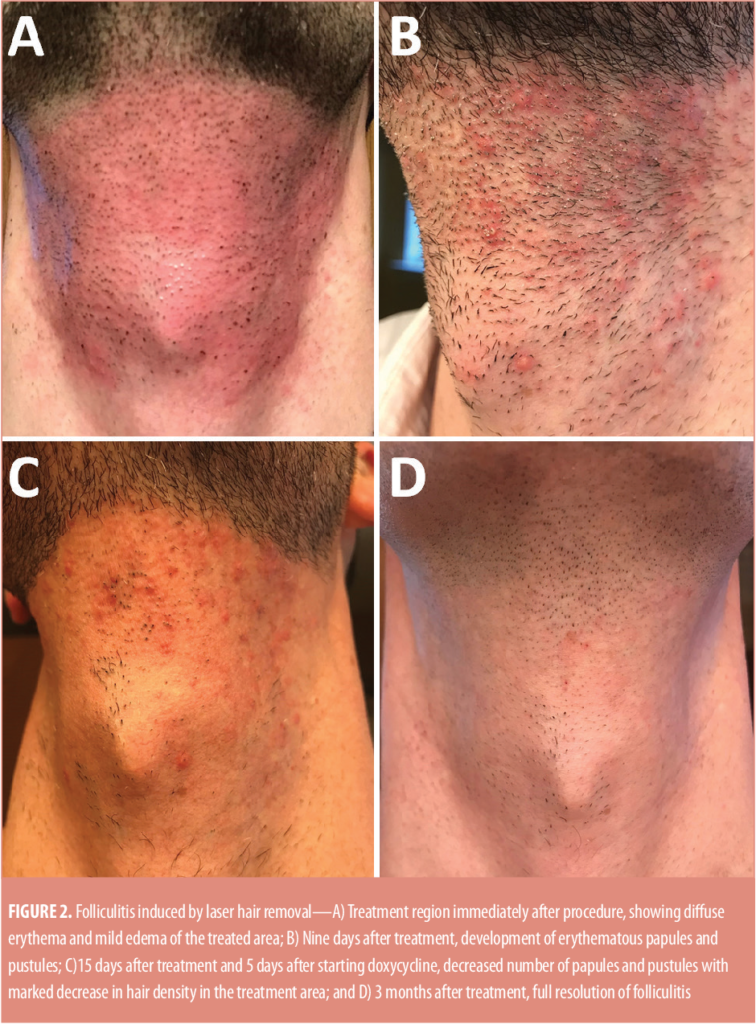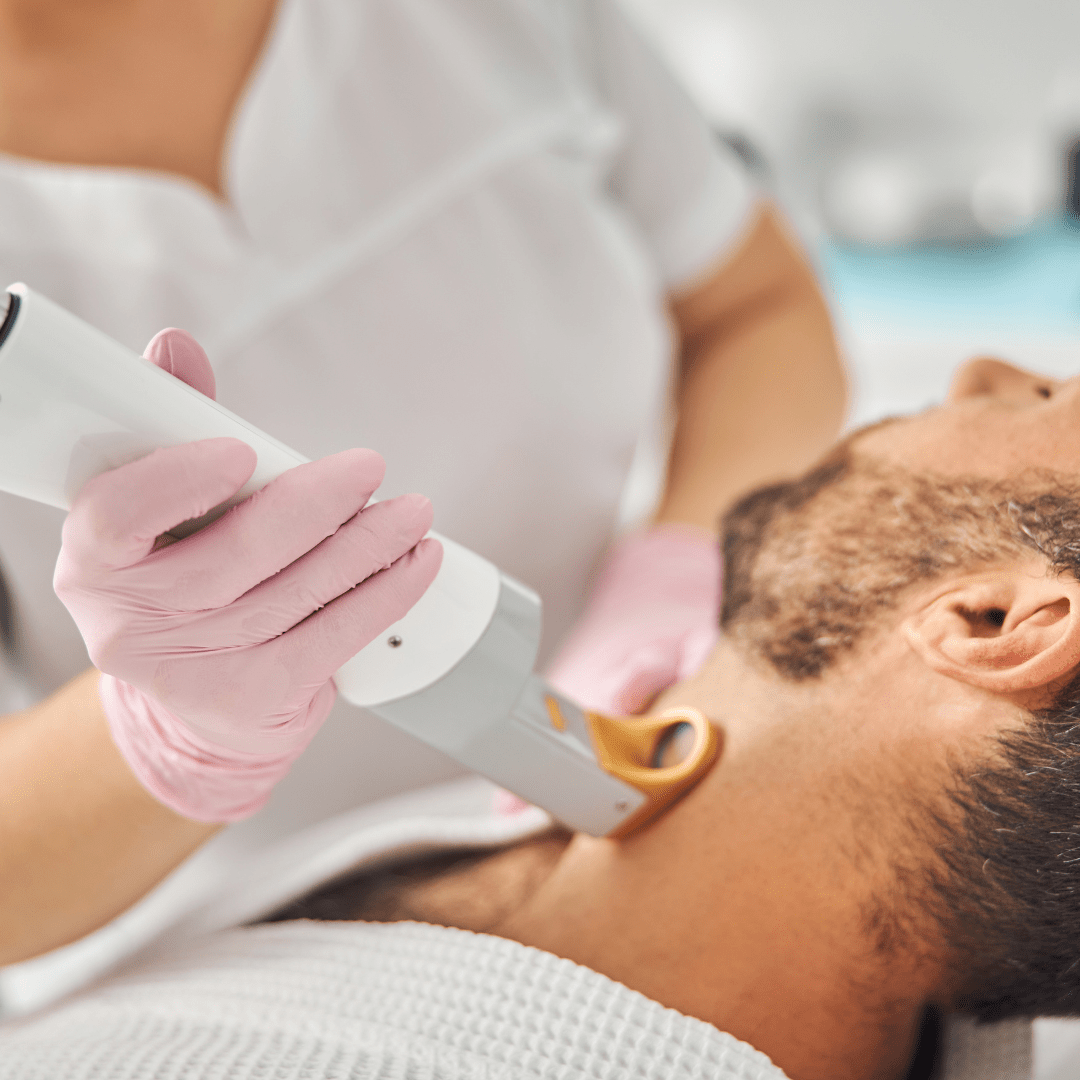Many traditional methods like waxing and threading have long been the norm, but not now certainly. According to National Library of Medicine, Folliculitis laser hair removal is quickly gaining attraction as a more comfortable and reliable solution for unwanted hair and red bumps that appear in the skin
It’s time to bid goodbye to painful treatment like waxing and provide warm welcome to laser technology that is revolutionizing the skin and hair care industry. In this blog post, we will explore what folliculitis laser hair removal is, how it actually works, and why it’s quickly becoming the preferred method for removing unwanted body hair. Read on for all the details!
Also Read: Laser Hair Removal For Eyebrows
Contents
- 1 What is folliculitis?
- 2 How does folliculitis laser hair removal work?
- 3 Is Folliculitis laser hair removal effective?
- 4 What are the side effects of folliculitis laser hair removal?
- 5 How much does folliculitis laser hair removal cost?
- 6 Folliculitis laser hair removal vs. other hair removal methods
- 7 Final takeaway
- 8 Frequently Asked Questions
- 8.1 1. Does laser hair removal cause folliculitis?
- 8.2 2. Can you permanently get rid of folliculitis?
- 8.3 3. What hair removal method is best for folliculitis?
- 8.4 4. How to treat folliculitis after laser hair removal?
- 8.5 5.Is Laser Hair Removal Covered by Health Insurance?
- 8.6 6. How can I get rid of my laser hair bumps?
What is folliculitis?
Have you ever experienced a bad case of razor burn or ingrown hair from face or any other parts of the body? If so, you may be familiar with this peculiar term “folliculitis.” Folliculitis is a condition that occurs when hair follicles become inflamed. It can be caused by a number of things, including shaving, waxing, and even tight clothing.
This usually appears as small red bumps on the skin. But in few situations, these bumps may be filled with pus or other fluids. They may cause irritation or soreness. Folliculitis is generally not a serious condition to get afraid of, but it can be uncomfortable.
There are several treatment options available for folliculitis in industry. These include over-the-counter creams and ointments, antibiotics, and laser hair removal.
However, Laser hair removal is becoming an increasingly popular option for treating folliculitis because it is relatively painless and has minimal side effects compared to other treatments.
If you think you may have the symptoms of folliculitis, talk to your doctor about the best treatment option that suits you.
How does folliculitis laser hair removal work?

Generally, Laser hair removal is a technique that uses a powerful beam of light which targets from the root of the hair and removes it unconditionally. The heat that is generated from the laser damages the hair follicle, which prevents future hair growth.
Researchers say, Folliculitis is a common skin condition that causes inflammation and irritation around the hair follicles. Although several treatments are available, Laser hair removal can help to reduce the symptoms of folliculitis by destroying the bacteria that cause the infection.
Laser hair removal is a safe and effective way to reduce the symptoms of folliculitis and improve your appearance. If you are considering this treatment, be sure to consult with a qualified dermatologist or cosmetic surgeon to discuss your options.
Is Folliculitis laser hair removal effective?
If you’re really looking for a long-term and safe solution to hair removal, folliculitis laser hair removal may be right for you. This treatment uses laser energy to target the hair follicle, resulting in permanent hair loss.
Many people have a myth that this laser hair removal is best suited for lighter skin tone. This is a totally wrong. It can be used on people with all skin types and hair colors. The number of sittings/sessions required depends on the individual, but most people need between three and six sessions for optimal results.
If you’re interested in folliculitis laser hair removal, just search for Dermatologist/Cosmetologist clinics nearby.
What are the side effects of folliculitis laser hair removal?
Folliculitis is a condition that affects the hair follicles. The condition can be caused by a variety of factors, including shaving, waxing, and exposure to certain chemicals.
Laser hair removal is a popular method of hair removal that uses a laser to target the hair follicles. The heat from the laser destroys the hair follicles, which prevents new hair from growing. Laser hair removal is an effective way to remove unwanted hair, but it can also cause side effects.
If you experience any side effects from laser hair removal, it is important to see a doctor or dermatologist as soon as possible.
How much does folliculitis laser hair removal cost?
The cost of folliculitis laser hair removal can vary depending on the severity of the condition and the size of the area being treated. For mild cases, the treatment may only require a few sessions and can be done in an outpatient setting. More severe cases may require multiple sessions and may need to be done in a hospital.
The cost may vary from 100$ to 300$.
Folliculitis laser hair removal vs. other hair removal methods
Pros
- Laser hair removal is the safest way to remove hair from intimate areas because it doesn’t involve any chemicals that could cause irritation.
- Laser hair removal is a permanent solution, so you will need to do treatments every few months or continuously for life
Cons
- laser hair removal is more expensive
Final takeaway
Folliculitis laser hair removal is a great way to get rid of unwanted body hair without the pain and hassle of waxing or other methods. It’s fast, effective, and long-lasting so you can enjoy smooth skin for months at a time.
Plus it’s safe and comfortable with minimal side effects. If you’re interested in trying folliculitis laser hair removal, be sure to consult with a trained professional who can guide you through the process and answer any questions that you may have. With all these benefits, it’s no wonder why more people are choosing this method over traditional waxing!
Frequently Asked Questions
1. Does laser hair removal cause folliculitis?
To minimize the risk of folliculitis, it’s important to follow the aftercare instructions provided by your practitioner and to avoid using hot tubs, saunas, and tight clothing in the treated area for several days after the procedure.
2. Can you permanently get rid of folliculitis?
Folliculitis can often be treated and resolved, but it may not be permanently cured in all cases. The duration and course of folliculitis treatment depend on various factors, such as the cause and severity of the condition, as well as the individual’s overall health and response to treatment. In some cases, folliculitis may recur and require additional treatment.
3. What hair removal method is best for folliculitis?
The best hair removal method for people with folliculitis will vary based on the individual’s specific needs and skin type.
Waxing: This method of hair removal is less likely to irritate the skin and cause folliculitis compared to shaving.
Electrolysis: This method uses an electrical current to destroy hair follicles, making it a permanent hair removal solution.
Depilation creams: These creams dissolve hair above the skin surface, so they do not irritate the hair follicles.
4. How to treat folliculitis after laser hair removal?
Keep the skin clean: Wash the affected area with soap and water and gently dry the skin.
Apply topical treatments: Antibiotic creams may also be used if an infection is present.
Take oral antibiotics: In more severe cases, oral antibiotics may be prescribed by a healthcare provider to help clear the infection.
Avoid further irritation: Avoid shaving or waxing the affected area until the condition has resolved.
Follow-up with a healthcare provider: If your folliculitis is not improving or is getting worse, make an appointment with your healthcare provider
5.Is Laser Hair Removal Covered by Health Insurance?
The coverage of laser hair removal by health insurance will depend on the specific insurance plan and the individual’s policy. Some health insurance plans may classify laser hair removal as a cosmetic procedure and not cover it.
However, in some cases, laser hair removal may be considered medically necessary if it is being used to treat a medical condition such as hirsutism (excessive hair growth) or pseudofolliculitis barbae (razor bumps). In these cases, the procedure may be covered by health insurance.
6. How can I get rid of my laser hair bumps?
Laser hair bumps, also known as pseudo folliculitis barbae or ingrown hairs, can occur after laser hair removal. Here are some steps that may help reduce the appearance of laser hair bumps:
Keep the skin clean
Apply topical treatments
Take oral antibiotics
Avoid further irritation
Exfoliate gently
Follow-up with a healthcare provider

